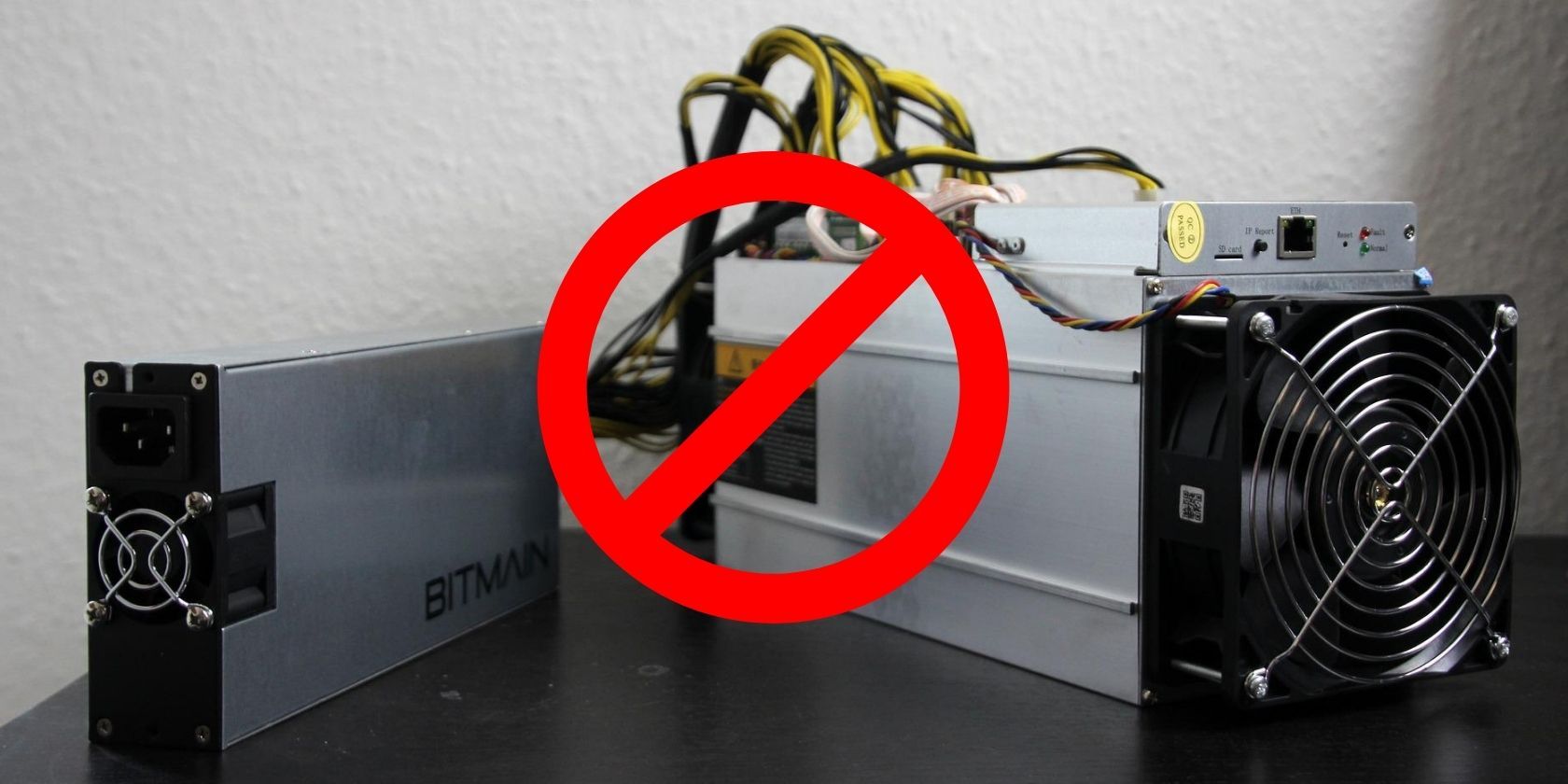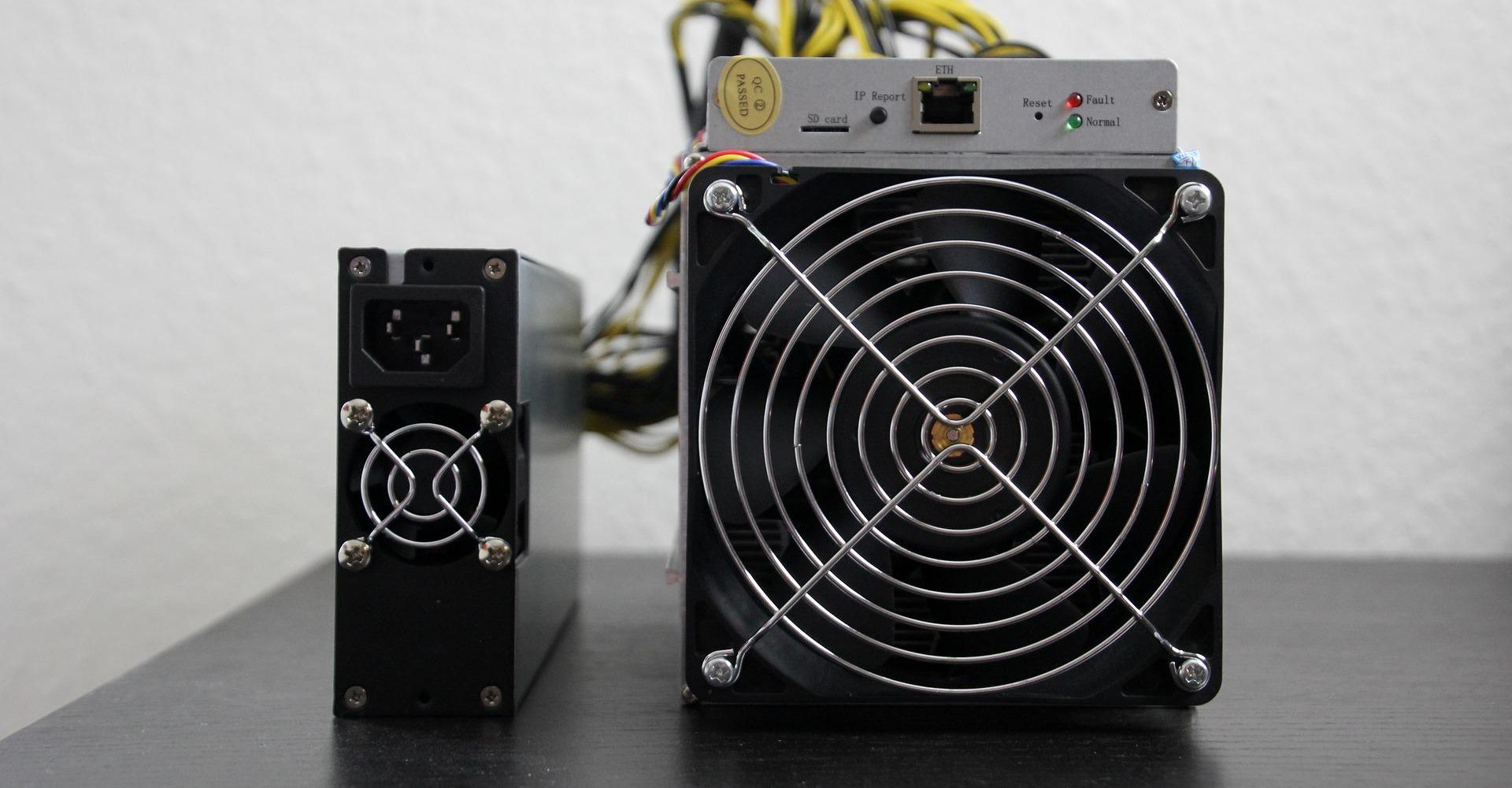The cryptocurrency industry doesn't just offer a profit for investors who buy and trade assets. In fact, one can make a healthy living from mining cryptocurrencies alone. But each cryptocurrency is different in its mining process, with some specifically designed for certain hardware. This is where ASIC resistance can become a factor. But what does ASIC resistance mean, and what is its purpose?
What Is an ASIC?
If you're unsure what an ASIC is, we'll run over a quick recap before we get into ASIC resistance.
An ASIC, or application-specific integrated circuit, is a chip designed for a specific function. In this case, cryptocurrency mining, but ASICs are used elsewhere. While many cryptos could once be mined using a CPU or GPU, increasing competition and an ever-decreasing unmined supply of certain coins has given way to something a little more intense. Enter the ASIC.
As you can see in the picture above, ASIC miners don't just consist of the circuit itself. In order to operate effectively, ASIC miners require a cooling fan and a backup generator, too. Each ASIC miner can only be used to mine one kind of cryptocurrency. This wouldn't be too much of an issue for those who mine various coins if ASIC miners were cheap, but, in reality, they're anything but. This is where ASIC-resistant cryptocurrencies can be of aid.
The Problem with ASIC Mining
There's no denying that ASIC miners efficiently and successfully mine coins. But today, even the cheapest ASIC miners out there will cost you a few hundred dollars up front, with some models going for thousands of dollars. Take Bitmain's range, for example. This is one of the most well-known and trusted ASIC miner retailers but is also representative of the sheer expense of this kind of hardware.
Bitmain's cheapest available Bitcoin miner is the T19 Hydro. If you're buying this model new, you're looking at a bill of almost $3,000. A number of other Bitmain miners are currently priced at around $5,000—but we're not talking about the premium stuff yet. If you want one of Bitmain's newer models, such as the S19 Pro+, be prepared to fork out just over $15,000.
Of course, some individuals can afford this kind of mammoth upfront payment, but many of us simply cannot fathom such an expense. Unfortunately, this is where the mining industry is biased towards wealthier miners. Bitcoin mining, for instance, is only possible with an ASIC miner. While GPUs and CPUs could once be used, Bitcoin's decreasing unmined supply and the rife competition among miners have made the entire process much harder.
This means that the average individual will now find it very difficult to get their foot in the door in the Bitcoin mining game. Not only are the initial costs incredibly high, but the energy consumption of running an ASIC miner around the clock also results in a consistently higher electricity bill. Because of this, many aspiring Bitcoin miners must simply turn away from the venture, leaving the mining rewards to those who can afford the expense.
But this struggle hasn't gone unnoticed, and this is where ASIC-resistant cryptocurrencies come in.
What Is an ASIC-Resistant Cryptocurrency?
When it comes to mining cryptocurrency, three pieces of hardware can be used. Of course, you've got your ASIC miner, and then there are CPUs and GPUs. A CPU (central processing unit) is what you'll find in your laptop or PC and is responsible for providing your device with operational instructions and processing power.
Additionally, you've got GPUs (graphics processing units). You can also find these in your computing devices, which are responsible for graphics rendering. These pieces of hardware can be used to mine different cryptocurrencies but have been somewhat outshone by ASIC miners in recent years. However, this hasn't stopped certain developers from ensuring their cryptocurrencies are ASIC-resistant to level the playing field.
When a cryptocurrency is ASIC-resistant, its protocol and mining algorithm are designed to be far less susceptible to ASIC mining. This isn't to say that these cryptos are impossible to mine with ASICs. Rather, it's just much harder and often a waste of time and money. Because of this, if an ASIC-equipped miner came across an ASIC-resistant cryptocurrency, they'd likely be put off immediately. This is the core purpose of ASIC-resistant cryptocurrencies. They welcome those who are using CPUs and GPUs.
5 ASIC-Resistant Cryptocurrencies Examples
While many cryptocurrencies are not ASIC-resistant, quite a few notable examples exist. So, let's discuss the top ASIC-resistant coins out there.
1. Ravencoin (RVN)
Ravencoin has become an incredibly popular mining option because of its ASIC resistance. Though Ravencoin is a product of a Bitcoin hard fork, its protocol has been specifically tweaked to encourage CPU and GPU mining. While GPU mining is generally more speedy and effective than CPU mining, opting for a CPU to get started can keep your costs low. But if you're happy to opt for a GPU, Nvidia and AMD's models are a popular choice for Ravencoin mining.
2. Monero (XMR)
Monero is another popular mining avenue for those looking to use more affordable hardware. Launched in 2014, this ASIC-resistant cryptocurrency can be mined with a CPU and GPU. However, unlike Ravencoin, it's often more effective to use a CPU to mine Monero due to the energy consumption vs. profit gap. This differs depending on the hash rate of your chosen hardware but is important to note before you choose which CPU or GPU to purchase for your Monero mining venture.
3. Haven Protocol (XHV)
Haven Protocol is a proof of work cryptocurrency with a design inspired by Monero. And, like Monero, Haven Protocol is also ASIC resistant, as its mining algorithm, RandomX, is specifically designed to be suitable for CPUs and GPUs only. Haven Protocol is also a particularly profitable cryptocurrency to mine, with a current rewards rate of around $1 daily.
4. Vertcoin (VTC)
Vertcoin's Lyra2RE(v2) mining algorithm is ASIC resistant and is therefore compatible with CPUs and GPUs. However, GPUs take the cake in this case. On top of this, a GPU rig is a far more viable choice than a single GPU in the process of Vertcoin mining. This means that you may have to purchase a fair amount of additional hardware to mine Vertcoin, including a mining motherboard, CPU, and hard drive.
5. Ethereum (ETH)
The most well-known ASIC-resistant cryptocurrency out there at the moment is Ethereum, a highly valuable decentralized asset. Ethereum can technically be mined with an ASIC rig but is not designed for such hardware, so you may have a hard time making a profit if you use an ASIC in this case. Instead, Ethereum can be far more effectively mined using a GPU. Many choose to build their own GPU rigs to mine Ethereum, which can be pricey but less so than buying an ASIC miner outright.
ASIC-Resistant Cryptos Open the Door to Novices and Budget Keepers
While cryptocurrency mining is often very successful using an ASIC miner, the high price point of this hardware makes mining inaccessible to the everyday person. This is why ASIC-resistant cryptocurrencies are a great option for those new to the mining industry or who simply don't want to splash too much cash on the venture.




